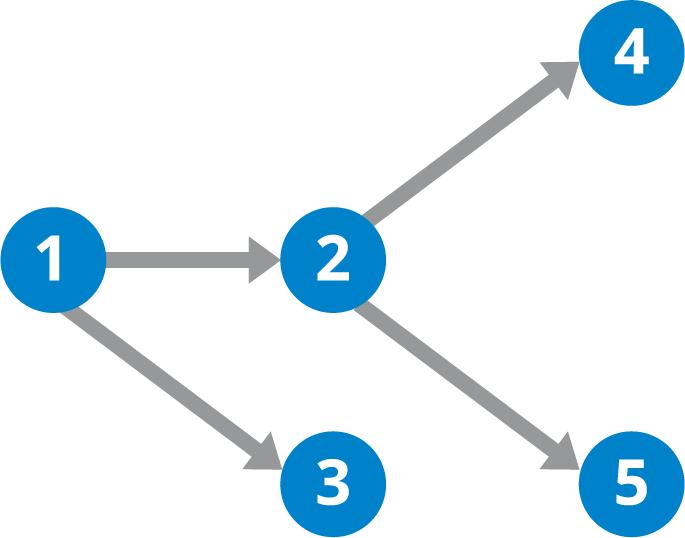Supply Chain Technology
Introducing Proof-of-Unity
04/11/2023 · 5 min read
The new consensus mechanism
 Photo on EnvatoElements
Photo on EnvatoElementsIf you know about blockchain and how it works, you might also be familiar with mechanisms of consensus.
Every blockchain has nodes, — authorized network stakeholders, and their devices that keep track of all transactions. They exist to confirm the legality of transactions.
Mechanisms of consensus, on the other hand, are programs used to reliably achieve agreement between these blockchain nodes. They are much faster compared to human auditing and help secure any data in a blockchain through encryption and group verification. Common examples would be Proof-of-Work (PoW), mainly associated with Bitcoin, and Proof-of-Stake (PoS).
However, despite the fact that consensus mechanisms were developed to achieve trust and security across the blockchain, they still have their own issues.
What is the problem with current consensus mechanisms?
Mainly, the consensus mechanisms developed so far have primarily prioritized performance optimization over scalability and environmental considerations.
The scalability of the blockchain is important in that the higher the scalability, the higher the system’s ability to manage increases in system processing demands and quantity of work.
Consensus mechanisms like PoW or PoS may differ in applications, but they all share a common principle: all nodes in the blockchain are forced to compete with each other to create and close blocks. This may pose significant security and performance challenges due to the autonomous node behavior and possible compromised resilience and leaks, making blockchain technology as unreliable as you might have imagined at first.
It’s possible to compensate for these performance issues with the use of more hardware resources, however, it only exacerbates scalability issues further. So, while the security might improve this way, it will be at the cost of other factors like processing time and speed.

Photo by anankkml on EnvatoElements
Alternative approach
So, if current consensus mechanisms won’t work all that well, what are our other options?
We thought about this question too and developed a consensus mechanism that doesn’t emphasize performance optimization only but also prioritizes scalability, security, and environmental impact.
The Proof-of-Unity, unlike the traditional PoW and PoS, uses a more efficient algorithm that reduces the need for high-performance hardware and energy consumption to validate the transactions, thus reducing the environmental impact.
Our consensus mechanism is designed to alter the interaction between nodes in a way that results in improved speed, scalability, and decentralization.
Deeper Dive into Proof-of-Unity
To facilitate the validation of large volumes of data transactions, the Proof-of-Unity protocol employs a distributed approach, dividing members into smaller peer-to-peer groups. These smaller groups can operate in parallel due to the utilization of a directed acyclic graph (DAG) structure for the organization of blocks.

Directed Acyclic Graph (DAG) Diagram by Hazelcast
Compared to conventional blockchain systems, which employ a single transaction pathway, DAG-based systems offer multiple routes for transactions to traverse, significantly increasing the speed of data flow throughout the network.
The Proof-of-Unity mechanism allows for faster and more efficient validation of transactions, as well as reduces the load on any single node, improving the overall scalability and decentralization of the network.
So, the block created by the winning node won’t cause direct transmission with other nodes immediately. Instead, all nodes will transmit individual transactions within a closed peer-to-peer group with at least 10 random nodes in every new block. And once the transactions are received, the node will verify that they are correct with the protocol parameters, and then transmit them to all other members of the P2P group. These P2P nodes will evaluate the communication quality and issue an acknowledgment of receipt with a score based on its quality.
The score is important not only for determining the best nodes but also for the reliability of nodes. If the transaction was of poor quality or non-compliant with protocol, or the node itself has attempted to force the assignment of the block closure, the transmitting node will earn a negative score, earning a penalty for subsequent closures.
Each node will start with a certain score and if the node’s score drops to zero, the node will be removed from the network due to its unreliability.
Nodes with higher scores have a higher chance to become the closing node for the next block. In turn, the node with the lowest score will not receive any reward for this and the next rounds, which will incentivize nodes to do their best work.
All nodes in the group contribute to blocking validation and creation, but they cannot independently choose which blocks to include in the peer network and which nodes to work with, — they must collaborate with those given to them. Network security improves over time as the quality of the nodes and the transactions improves, and they increase their longevity in the network.

Photo by YuriArcursPeopleimages on EnvatoElements
Main takeaway
If you got a bit lost on the semantics of PoU, don’t worry. It’s hard to comprehend and visualize some things that you may never have heard before.
So, we wrote step-by-step how Proof-of-Unity works in Prometeo:
1.The client device packages its payload data into a transaction and adds a unique transaction ID, a digital signature, and a hash of the entire transaction.
2.The client submits the transaction to the Prometeo pool, where a node extracts it from the pool.
3.The node then verifies the transaction contents and triggers the Proof-of-Unity consensus mechanism.
4.Within a P2P network of nodes, each node in the group validates and signs the transaction. If more than 90% of the nodes in the group agree with the transaction, it is sent to the validator.
5.The validator checks the entry transaction’s signatures, hash, ID, and fee. If everything is in order, the transaction is written to the ledger and sent to the master node for storage.
Conclusion
The Prometeo blockchain employs a robust set of cryptographic algorithms to ensure a high level of security.
We took into account the key limitations of an existing blockchain, mainly lack of security and low scalability, and developed Proof-of-Unity. The mechanism operates in a dual manner, initially as a Proof-of-Work (PoW) using devices such as smartphones, tablets, and computers that meet the minimum system requirements. As the network matures, users will be able to lock their assets and participate in the stacking process in exchange for the opportunity to become a master node, effectively shifting the consensus mechanism to a Proof-of-Stake (PoS) approach.
This dynamic combination of PoW and PoS provides an efficient and secure method for reaching Prometeo Chain System LLC consensus in the Prometeo network.
If you are still unsure about the principle of how PoU works or just have some other general questions, feel free to leave a comment!
Thank you for reading so far!
Reference list:
Frankenfield, J. (2023b). What Are Consensus Mechanisms in Blockchain and Cryptocurrency? Investopedia. https://www.investopedia.com/terms/c/consensus-mechanism-cryptocurrency.asp#:~:text=A%20consensus%20mechanism%20is%20any,the%20most%20prevalent%20consensus%20mechanisms.
George, B. (2022, May 16). What Is a Consensus Mechanism? CoinDesk. https://www.coindesk.com/learn/what-is-a-consensus-mechanism/